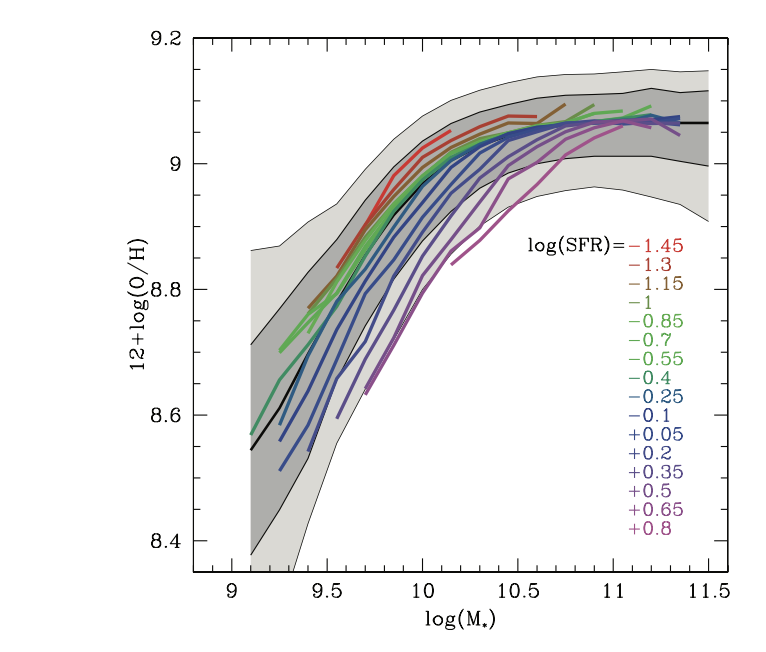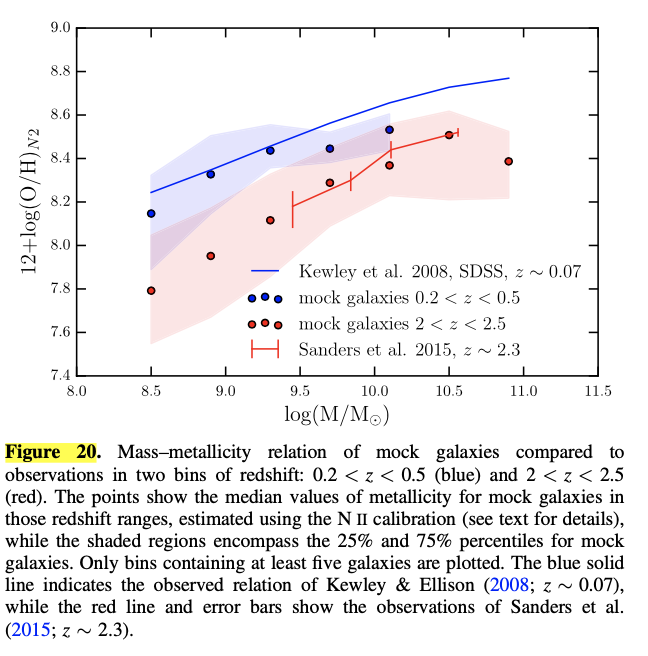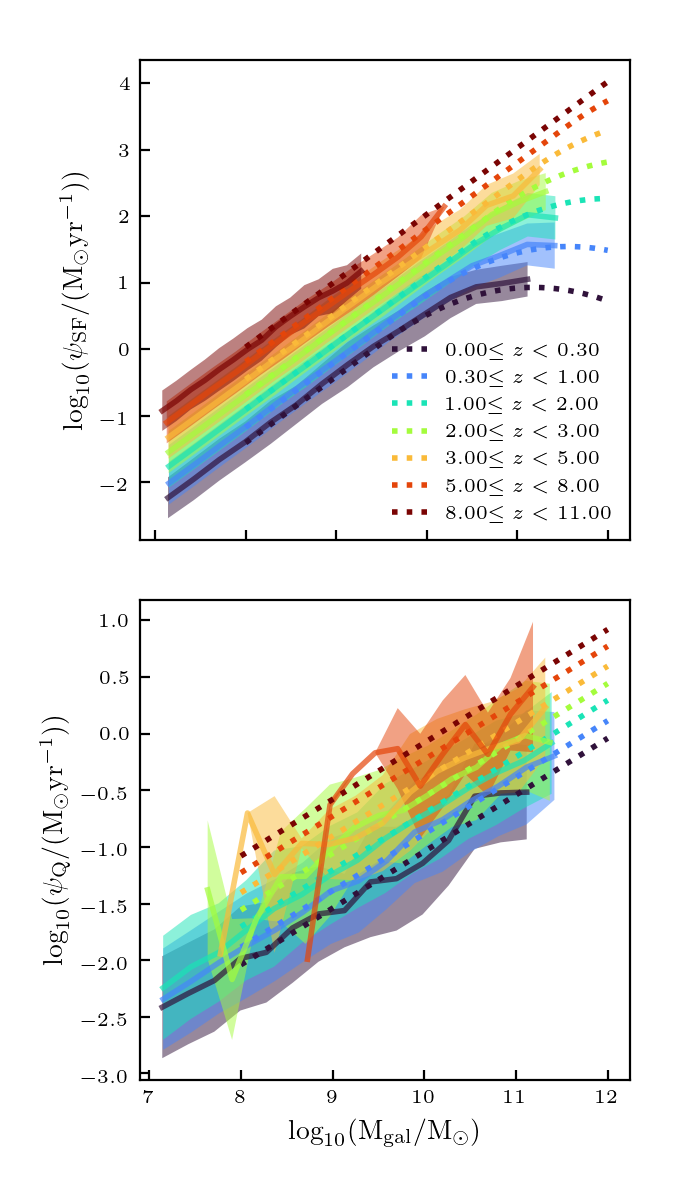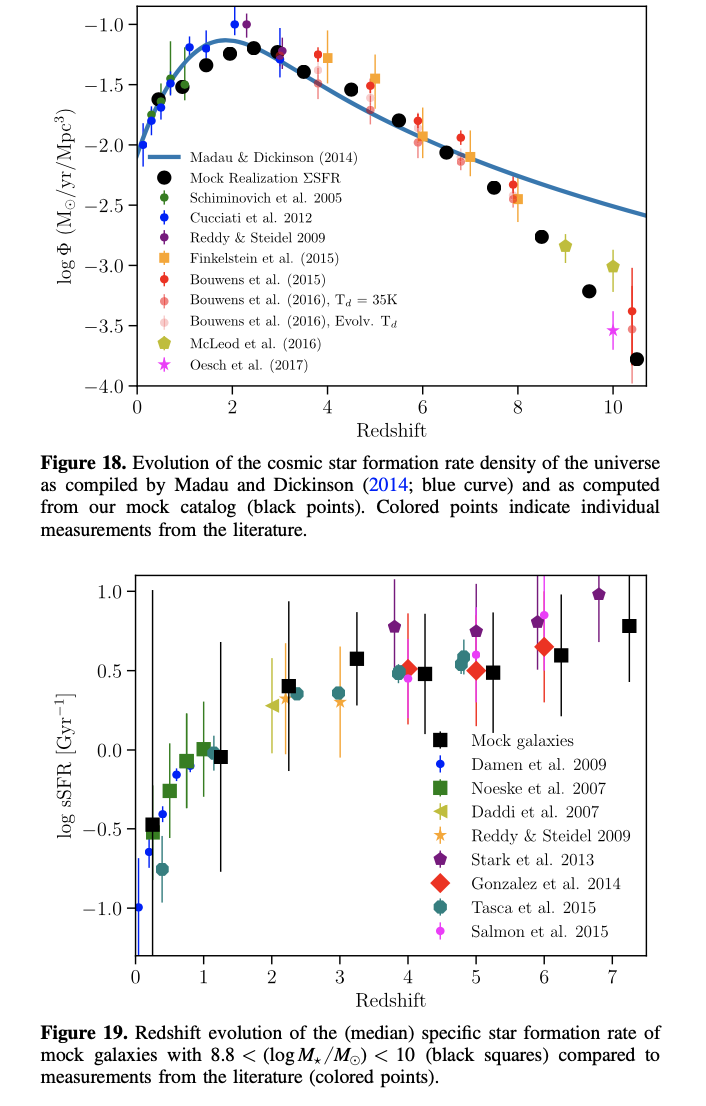Nicole Drakos
Research Blog
Welcome to my Research Blog.
This is mostly meant to document what I am working on for myself, and to communicate with my colleagues. It is likely filled with errors!
This project is maintained by ndrakos
Metallicties
In this post I am checking to see whether the mock galaxy metallicities agree with observations.
Metallicity Model
The metallicities were assigned from the fundamental metallicity relation from W18 (eq 15):
\[\log_{10}(Z_{\rm ISM}/Z_\odot) + 8.7 \approx 12 + \log_{10}({\rm O}/{\rm H}) = -0.14 \log10( \psi /M_{\odot} {\rm yr}^{-1} ) + 0.37 \log10(M/M_\odot) + 4.82\]This depends on galaxy stellar masses and SFRs; the stellar masses were assigned from abundance matching, and the SFRs were assigned from Shreiber et al. 2017.
Results
Here is the metallicity-mass relation for all the star-forming galaxies in the mock catalog (I found very little difference when I did a redshift cut):

For comparison, here are results from Mannucci et al. 2010:

And from W18:

My metallicities seem a bit low… i.e. at masses of \(10^9\) my median metallicities are ~8 versus ~8.5 in the Manncci et al 2010 plot. This could be because I’m including higher redshift galaxies; I did not find much a redshift dependance, but I have very little low redshift galaxies because of the narrow size of the survey. My results do agree well with the mock galaxies at higher redshifts in the W18 plot.
Star Formation Rates
I also took a closer look at the SFRs (assigned from Shreiber et al. 2017 equations 10 and 12 for star-forming (SF) and quiescent (Q) galaxies, respectively):

For comparison, consider the following plots for the cosmic star formation rate density and the sSFR:

and from Williams:

The sSFRs agree pretty well, but there are issues with star formation density. The first is probably a unit problem (it is off by ~7 orders of magnitude). The second issue might be more of a problem; star formation rate density does not decrease as it should with redshift. Therefore, it seems that there is too much star formation at high redshifts.